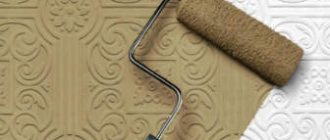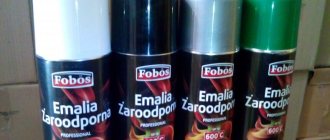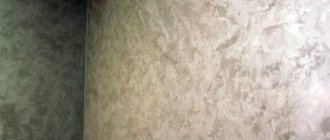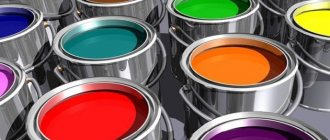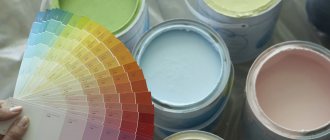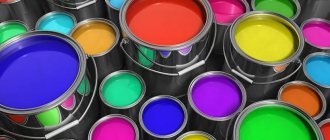Rules for painting plastic
It should be noted that not all types of plastic lend themselves equally well to coloring. For example, if a material such as polypropylene or polyethylene was used for manufacturing, high-quality painting becomes impossible.
Before painting ABC plastic, before carrying out a set of measures, it is necessary to carry out priming.
Many citizens are wondering whether there is a need for priming.
To have an accurate idea, you need to pay attention to the following aspects:
- If the plastic sinks in water, then there is no need for priming, but if not, priming is mandatory;
- It is also permissible to set fire to part of the part, and if black smoke does not emit during its combustion, it is necessary to carry out priming.
Method 2: Spray painting
Best for: PLA, ABS, PETG plastics.
If you want to decorate a 3D printed model evenly using one color, then using an aerosol will give the optimal result.
Spray can
Some brands offer attachments with different characteristics.
Before use, shake the can in accordance with the manufacturer's recommendations. Allows the paint to come out more evenly.
Keep the nozzle clean. This is usually achieved by lightly spraying an inverted can at the end of each session.
Keep the can away from open flames and store in a cool place. Don't forget that this is a high pressure container!
Dye
When searching for spray paint, you will find that there are many varieties available. If you want to use a certain shade, carefully read the RAL, CMYK and RGB values on the can.
Painting process
- Clean and sand your 3D printed model.
- Start spraying by pointing the stream slightly past the edge of the object you want to paint.
- Apply the paint by spraying the surface you want to decorate in slow, even strokes.
- Stop spraying by pointing the spray slightly beyond the object you want to paint.
- Let the paint dry.
Features of painting plastic with your own hands
It is extremely important to take into account that when painting, certain rules must be followed, the main ones being the following:
- It is necessary that the plastic is cleaned and dry;
- The plastic must first undergo a priming process (based on rubbing or spraying). Only after the primer has completely dried should you begin the process of painting it.
In order for the paint to dry well and adhere, it is extremely important to follow the rules, the main ones of which are:
- Painting should be carried out only if the humidity is at least 80% and the air temperature is at least +18;
- Both the dye and the plastic surface must be at the same temperature;
- The paint layer should be of medium thickness, since the drying process of a version that is too thick occurs over a long period, and one that is too thin will crack very quickly;
- The complete drying process takes, on average, about 5 days: the lower the temperature and the higher the humidity, the longer the drying takes;
- For painting soft plastic, it is more acceptable to use elastic enamels, which contain a plasticizer that prevents the corresponding layer from cracking;
Painting hard plastic must be done using acrylic paints.
How to paint plastic: step-by-step instructions
The result of painting work largely depends on how carefully the surface of the part was processed. Often the preparatory stage requires more labor and time than the process of applying paint.
Preparing plastic before painting
A thorough inspection of the model will reveal printing flaws - deep gouges and cracks that cannot be removed during sanding and priming. Such defects are eliminated using epoxy resin. Small dots and visible boundaries of layers will be hidden when processed with abrasive materials and filled with soil.
- Grinding. This is done with sandpaper or an abrasive sponge. For roughing, use material with a grain size of P180, finishing is performed with sandpaper P400. It is not advisable to use a finer abrasive - the primer will not stick to the glossy surface. During the grinding process, minor errors made during printing are removed, and the surface is matted for better adhesion to paintwork materials.
- To sand ABS and PETG, you should choose a water-resistant abrasive material and sand with water. With intense movements, the surface of the part heats up, and the fluidity of the plastic, especially PLA, increases. You need to be patient and work slowly.
Important! Even if the part was treated with a solvent to smooth out defects, it needs to be sanded to remove the gloss.
- Cleaning and degreasing. The model is washed in soapy water and dried. Soap surfactants work as degreasers. It is recommended to additionally treat it with an antistatic agent so that the electrified surface does not attract dust.
Primer
Primer is a type of paint that forms the uniformity of the surface and increases its adhesive properties. Available in aerosol cans and brush containers.
- The primer is applied in two or three layers with the obligatory waiting time for the layers to dry, specified in the instructions for the composition.
- Re-sanding. Abrasive treatment of the primed part is necessary to maximize the surface quality. For sanding, it is recommended to use sandpaper with a grit of P600 or higher. Since the adhesion of the paint to the primer is quite high, there is no need to worry that the pigment will not adhere to the glossy surface.
Important! The priming and sanding cycle can be repeated if the preparation result is not completely satisfactory.
- Re-cleaning. The model is washed again with soap to remove dust after sanding and degrease. It is best to prepare a soap solution from dishwashing detergent.
Advice. When working with an aerosol, the composition is sprayed in a circular motion from a distance of about 20 cm in a thin layer to prevent drips.
What do you need for painting?
- Organization of work space. The place for applying primer and paint must be prepared - create an improvised box that will protect interior items from flying pigment particles.
- Materials. Paints to choose from: aerosol, in jars. Varnish.
- Tools. Brushes - art or manicure brushes, airbrush, abrasive materials for polishing.
Reference. To get the handmade effect, you need to use brushes. An airbrush is a tool for professionals; working with it is quite difficult.
Painting plastic
During the painting process, it is important to follow the main rule - apply the pigment in as thin a layer as possible. It is better to make several translucent layers than one thick one. This will avoid drips, which can be difficult to get rid of.
The main tone is formed with aerosol paint, the details are highlighted with thin brushes. During spraying, the can is held at a distance of 10–30 cm: the distance from the surface to be painted affects the density of the layer.
Attention ! The room temperature should be within the limits specified in the recommendations for the use of paints and varnishes. During drying, the product must be protected from dust. Until the final polymerization of the paint, the surface must be protected from mechanical stress and high humidity.
Wash
To emphasize the relief, highlight recesses and protruding fragments, and create shadows, the washing technique is used. It is done using liquid paint: the pigment is diluted in a 1:1 ratio with a solvent; for acrylic paint it is water. The technology consists of generously applying a liquid remover, the tone of which is much darker than the base one, to an already painted model.
The paint fills all the recesses and remains in them. This visually emphasizes wrinkles, joints between bricks, bolt heads and other small details. After treatment with a wash, the model looks most natural. For the best flow of paint, the figurine is pre-coated with glossy varnish.
Final processing
Varnishing is the final stage of painting. Clear varnish will complete the look, protect the paint, and increase its durability. To create a transparent layer, different varnishes are offered - matte and glossy. Not every model needs a glossy finish. To avoid excessive “toy-like” appearance, it is better to use matte varnish for the final coating, for example, the walls of buildings, clothing items, and animal figures.
Reference. The varnish is selected based on a composition identical to the paint. For acrylic pigments, water-dispersed acrylic varnish is suitable. Sold in cans and cylinders.
Tools and materials for painting plastic
To paint a plastic surface, you must acquire the following items:
- Paints for plastics;
- Acrylic varnish (the best option, in aerosol form), which will be applied at the final stage of the work;
- Special protective equipment, for example, a respirator and goggles; if possible, it is necessary to carry out a set of relevant works on the street;
- Newspapers and films used to protect objects that cannot be painted;
- Paper or masking tape;
- Bucket of water and detergent;
- Alcohol or solvent.
- Sandpaper;
- Putty or primer material.
Care Tips
Tables and chairs made of synthetic material are valued for their durability and unpretentiousness.
But under the influence of wind, sun, rain and dew, they fade and break. In order to preserve the spectacular appearance of furniture made of acrylic and plastic for longer, it should be regularly wiped with a damp cloth, and any dirt and stains that may appear should be washed off with mild detergents. Do not use hard brushes or abrasive cleaners. Cleaning sprays will help refresh the color and protect the material from fading. And polishes will fill microcracks and abrasions, so that the surface of the plastic will remain glossy for a long time.
Main types of paints for plastic
Initially, it should be noted that painting a plastic surface should never be done using paint containing acetone. As for other options, the most acceptable among them are:
- Water-based paints;
- Matte paints;
- Aerosol paints.
Each of these options has its own characteristics that must be taken into account when painting.
Method 1: Painting with a brush
Best for: PLA, ABS, PETG plastics.
If you paint a 3D printed model with a brush, you will definitely achieve a unique “handmade” effect.
Try a few brushes first because it's easier to get good results with a comfortable brush. As a rule, it is enough to use only 1 or 2 different flat brushes.
Brush
- Choose a quality brush that is stiff enough to handle the viscosity of the paint you choose to work with.
- Experiment with different bristle types and handle shapes to find the one that works for you.
- Pause painting to clean your brush once the paint begins to dry. Naturally, the brush must be cleaned after each use. Do not leave paint drying on the bristles of the brush.
- After cleaning, the brush should be stored on the handle, not on the bristles.
Dye
When it comes to painting with a brush, you are better off using acrylic paints.
Painting process
- Clean and sand your 3D printed model.
- Apply paint in thin, even layers.
- Give the individual layers time to dry.
Specifics of water-based paints
Many people call this type of material acrylic enamel. Its main components are a hardening agent and a hardener. The main advantage of this option is durability.
The plastic coating treated in this way does not fade over a long period and is not destroyed under the influence of ultraviolet radiation.
Before starting work there is no need to carry out priming, it is enough to just clean the surface well. This option is suitable only for external use.
Points to improve paint adhesion
And finally, a few simple steps to improve paint adhesion:
- When working with a 3D printed model, wear clean gloves to protect your skin from chemicals and the surface of the model from sebum.
- Remove any dirt before sanding, you don't want any dirt getting into your model. Isopropyl alcohol (rubbing alcohol) on a soft, lint-free cloth often works well for this.
- Use a regular vacuum cleaner with a soft, clean brush to remove particles after sanding.
- Sand off any rough edges that were added during priming.
- Always test chemicals such as paint, cleaning solvents, sanding, or other materials and treatments before committing to the final model you want to refinish.
Matte paint for plastic
To give the surface an aesthetic appearance, it is extremely important to use matte paint, before using which the surface must be treated with a primer.
This type of paint contains substances that are prone to wear resistance, which makes them suitable for painting cars.
Is it possible to paint a 3D model made of any material?
Painting 3D models made of PLA and ABS plastics is a fairly simple task.
PETG may have issues with paint durability, but the same techniques apply as PLA and ABS. But if you really want rich, vibrant color, then it's better to print your 3D PETG model in the color you want and leave it as is.
When it comes to nylon, which is used for 3D printing, we must remember that the paint adheres less well. In general, it is possible to paint with acrylic paints on nylon, but it will require some heat treatment to maximize surface tension and allow the paint to wet. This is often done using an open flame or plasma... In general, this does not look easy at home, so it is better to use dyes.
Aerosol paints for plastic
It should be immediately noted that this option is excellent for those who independently carry out painting work.
The following types of aerosols are currently distinguished:
- Soft touch - after all the necessary actions have been carried out, the surface acquires a pleasant roughness; Also, with the help of this paint it is possible to eliminate existing shortcomings;
- Modal enamel provides a glossy shine to the treated surface.
The main advantages of the spray can be considered:
- No costs associated with the purchase of painting materials (for example, brushes and rollers);
- Ease of application;
- Uniform surface coverage and creation of a smooth layer;
- Creation of any texture;
- Preservation and protection from tarnishing for a long period of time;
- Economical paint consumption;
- Ease of painting surfaces of a different color.
Regardless of what type of paint is chosen, to give the surface an ideal look, after drying it must be coated with polishing wax paint, which will help hide minor defects.
In the event that an independent dyeing process is carried out for the first time, it is extremely important to first obtain comprehensive consultation from a specialist.
Primer is paint's best friend
Priming the printed model improves ink adhesion. For any painting method (except nylon), using a primer is a good idea. Spray primer is considered to be the easiest way to get good results. The process of using the primer is very simple:
- Clean and polish your 3D model.
- Apply the primer in thin, even layers.
- Sand after applying the first and last coats to ensure a smooth surface.
- Allow each coat to dry according to the instructions included with the primer.
Photo of perfect painting of plastic at home
What can be painted with acrylic paint?
Acrylic paint is used for various works; it is used to paint facades made of wood, brick, plaster or concrete. Before applying paint, the surface must be cleaned of dust and a primer applied. Acrylic paint can be used for interior work, painting the surface of the ceiling and walls.
Interesting materials:
What is the grisaille painting technique? What is a shower thermostat? What is testosterone in men and why is it needed? What is tilt slang? What is the totem of immortality? What are transport services? What is a trade in in real estate? What is the value of family? What are securities social studies? What is a chain on 1xbet?
Area of use of different types of aerosol CM
Manufacturers produce paint for painting various surfaces in different types of spray cans:
- Acrylic-based composition is widely used. It covers plastic, glass, wood, ceramics, and metal.
- Stone and wood are coated with an alkyd composition This aerosol CM is widely in demand in car repair work.
- KM epoxy in a can is a restoration material, in demand in construction, it interacts with wood.
- The nitrocellulose composition decorates and protects metal, wood, glass, and ceramics.
Spray painting allows you to create a matte, semi-matte, or glossy finish on the surface, with different effects. The range of ready-to-use dye colors is very rich. If you need to create a phosphorescent coating, give the surface a chamelin effect, or imitate the texture of natural materials, then the best option for accomplishing the tasks is aerosol CM. But it can also be used to simply update decorative items. In order for your plans to be realized, you need to know how to spray paint.
How to paint car interior plastic
- Sand it.
- Degrease.
- Find out whether it needs to be primed or not.
- Restore texture if necessary.
- Paint it the desired color.
How to sand
To matt interior plastic under primer, red Scotch-Brite is usually sufficient. It is a felt-based abrasive material, similar to the hard side of a dish sponge. The advantage over fine-grained sandpaper is its softness, which allows this tool to efficiently process various bends and indentations.
How to degrease
Experienced painters advise using only anti-silicone. The fact is that classic solvents in the form of white spirit or solvent can ruin a plastic unit. For example, after using organic matter, stains form that are difficult to hide even with painting. By the way, we have already recommended abandoning white spirit when performing the technology that describes how to remove tar from a car body without damaging the paint.
Do you need primer on plastic or not?
The reason for fresh paint clumping and peeling is that no primer was applied first. This is a composition with a special formula of various additives and plasticizers, which improves the adhesion of paint to the surface. However, not all plastics require primer treatment. To determine whether to prime the interior plastic or not, you need to conduct two experiments:
- Set fire to a piece of the product being processed.
- Immerse the part in water.
If the plastic smokes and sinks, it is not necessary to use primer on the plastic.
When a plastic element burns like a wax candle and floats on water, you cannot do without a primer. It is important to choose the soil wisely. So ordinary automotive compounds are not suitable - the paint peels off instantly. You need a special primer designed specifically for plastic.
When is structural paint needed?
If you have ever touched a black plastic bumper or a dark side mirror housing on an inexpensive car, you probably felt that the tactile surface seemed to be covered with small pimples. The matte rough effect is structural plastic. The paint in question recreates this same effect and is typically used to cover up scuffs and light scratches.
What about the paint itself?
First decide what kind of coverage you want to get. Here are some examples:
- Soft-Touch. Usually used for dashboards. The surface is slightly silky and rubberized. This coating is applied to the panel from the factory.
- Normal, rough. Apply to hard plastic. For example, the side parts of the center console, lower trims on door cards or handles for closing doors.
- Glossy. Used for finishing interior levers intended for opening the door.
Then find out for yourself which shade to choose. If you plan to paint the interior exclusively in a restoration manner, then take the trouble to find a company catalog with the distribution of interior and exterior colors by VIN numbers. The original paint, selected according to the factory catalog (for example, for VW it is ETKA), will preserve the monotony of the overall picture of the interior. This will be because there will be no noticeable difference between the painted and unpainted parts.
For your information. For restoration work, it is better to order original paint and only from the car manufacturer.
If we talk in terms of the examples given, then it is better to purchase the Soft-Touch aerosol can through the official line. To get a regular rough layer, it is enough to use classic paint paired with structural paint. Here are examples for common shades:
- Black. The VAZ black Cosmos (code 665) will do.
- Grey. The VAZ decorative (graphite) intended for bumpers fits perfectly.
However, the color and origin of the paint are purely individual things and are selected solely according to one’s own preferences. Continuing the conversation about rough coatings, it is appropriate to mention the well-known RAPTOR U-POL, a protective coating for the exterior of a car, and its similarity - HB BODY.
Glossy objects are regular paint covered with several layers of varnish. The latter is recommended to be purchased in aerosol cans. There are no strict requirements for this component.
We recommend painting plastic parts of the car interior only with a spray can. When applying enamel with a brush, there is a risk of drips. In addition, such a layer takes much longer to dry, which means that the likelihood of catching dust particles is much higher.
Spray painting: tips from the experts
Recently, paints in aerosol cans have become in demand. Thanks to them, the most inaccessible areas are painted, where it is difficult to work with a brush or other painting tools. Spray painting does not require these devices or various solvents. If you use spray paint skillfully, then the loss of material will be minimal. To do this, you need to understand the types of aerosol CMs, study application technology, and prepare for possible problems when working with a spray can.
How to clean plastic panels?
The plastic found in the kitchen is most susceptible to contamination; fatty deposits along with dust particles will quickly do their job, and now dirty stains are visible on the surface simulating marble or tiles, which are best removed as often as possible, in which case the work will be less labor-intensive.
For cleaning you can use:
- Kitchen cleaning powders;
- Dishwashing liquid;
- Sponges and soap solution.
Under no circumstances should scrapers, pumice stones or other hard abrasives be used to clean plastic panels, as this will lead to scratches and deterioration of decorative qualities.
Also, you should not use aggressive reagents with a high content of hydrochloric and sulfuric acid for cleaning.
Fat deposits are easily removed with the help of cleaning powder applied to a sponge, and warm water; however, it should not be rubbed with great effort; the plastic surface is quite easy to clean.
Surface preparation
Before work, it is not enough just to select the colors of the basic contours and stencils. Care should be taken to properly prepare the bottles for spot painting, otherwise the efforts will not be successful.
- The bottle is dipped in a warm soapy solution to make it easier to remove the paper labels. If the paper does not come off, use a dish brush.
- The glass container is rinsed, left to dry, and wiped with a towel.
- After the bottles are completely dry, degreasing begins. Use a cotton pad soaked in acetone to thoroughly wipe the work surface.
- Fingerprints often remain during the drawing process, so it is recommended to keep a cotton swab with cologne or alcohol nearby.
- You can apply patterns directly to the bottle, but sometimes patterns on a dark or light background look more expressive. To do this, the glass is first coated with a single-color layer of acrylic paint in white, black or blue.
- The selected design is applied to the dried background with a pencil using a stencil or template. When it was not possible to immediately beautifully outline the outlines of the design, paint the bottle with the background again and try again.
To prevent trouble, you should apply a drop of paint to the unwanted glass to ensure the required consistency. If the paint seems liquid and spreads, just place the tube in the refrigerator for a while. A contour that is too thick leaves peaks stretched upward during the process; it is advisable to hold the tube in warm water for a little while.
What you need to know about plastic
This product comes in different types, and each of them has its own unique properties. Therefore, the coloring process is different for everyone, sometimes radically different. By the way, in your work you may encounter plastics that cannot be painted.
Moisture-resistant plastic paint
An example would be products made of polyethylene (PE) or polypropylene or polyethylene, from the surfaces of which the paint will peel off in layers. Therefore, it is almost impossible to paint metal-plastic pipes made of polyethylene. So it’s better to immediately select the desired shade.
Automotive plastics can be divided into two types:
- require application of a special primer to the surface;
- not required.
Anti-corrosion paint with plastic effect
Before painting, it is necessary to determine the type of material as follows:
- Dip a small piece of the product or its entirety into the water:
- if it goes under water, then there is no need to prime the part;
- if it remains on the surface, therefore, the material requires the application of a special primer mixture for plastic.
- The next option is to set fire to a piece of plastic part that has been cleared of dirt and paint:
- will burn with black smoke and soot, which means you can do without applying a primer;
- the flame is even and clean, therefore, it is necessary to prime its surface.
Plastic paint for interior work
How to paint plastic
Below are detailed instructions that will help you understand this process. Try to stick to it to get the final coverage you want.
Plastic painting consists of several stages:
- Degreasing surfaces with special compounds.
- Application of primer.
- Applying an acrylic-based primer.
- Sanding acrylic primer.
- Surface painting.
Features of coloring plastic products
- PVC or ABS plastics can be painted, but they must first be treated with a primer to increase adhesion (sticking). You can buy them in auto stores, where they are sold under the name “primer for plastic,” or in stores that sell paint and varnish materials, for example, Otex-type primers from. These compounds can be applied by wiping the surface or spraying it, after which you need to wait until they dry, usually 1-2 minutes.
Adhesive primer for plastic
- Make sure that the surfaces of plastic products prepared for painting are free of dirt and oil, and that they are dry.
- It is desirable that the temperature of plastic products, paint and painting equipment be the same. Ideal conditions can be considered when the room temperature is from 18˚C and the humidity does not exceed 80%.
- Paint in one layer, the thickness of which should be about 60 microns. With a lower setting, the finishing coat may seem fragile and the paint will not be able to stay on the surface of the product for a long time. At the same time, with a thick layer (more than 120 microns), the drying time will increase, which often has a bad effect on the appearance of the coating.
- Dry the plastic after painting at a temperature of 18-60˚C, this depends mainly on the thickness of the applied layer. For example, with a thickness of 90-120 microns, drying at a temperature of 50˚C and a humidity of 65% can last about 3 hours. Polypropylenes and polyamides can be dried at a temperature of 100˚C in 20 minutes.
- Paint on plastic surfaces completely dries (polymerizes) in 5-7 days, however, when the temperature is low, humidity is high and there is a thick layer of paint, this time period can increase several times.
Aerosol paint
This is one of the most convenient types of paints for plastic. The capacity of the can is 400 mm, which is enough to paint windows, slopes and small parts. Due to the wide variety of ready-made shades, this method is increasingly used in home repairs, although their price is more expensive than similar compositions in jars.
Most often, an acrylic universal composition is used, which dries quickly, thanks to which it is possible to transform the interior of a room in a short time. The service life of aerosol paint exceeds three years.
Aerosol acrylic paints for plastic
Its convenience when applied to the selected surface also plays an important role. You do not need any additional tools for this, and you do not need to have any special professional skills. The layer under pressure is applied evenly to the plastic.
